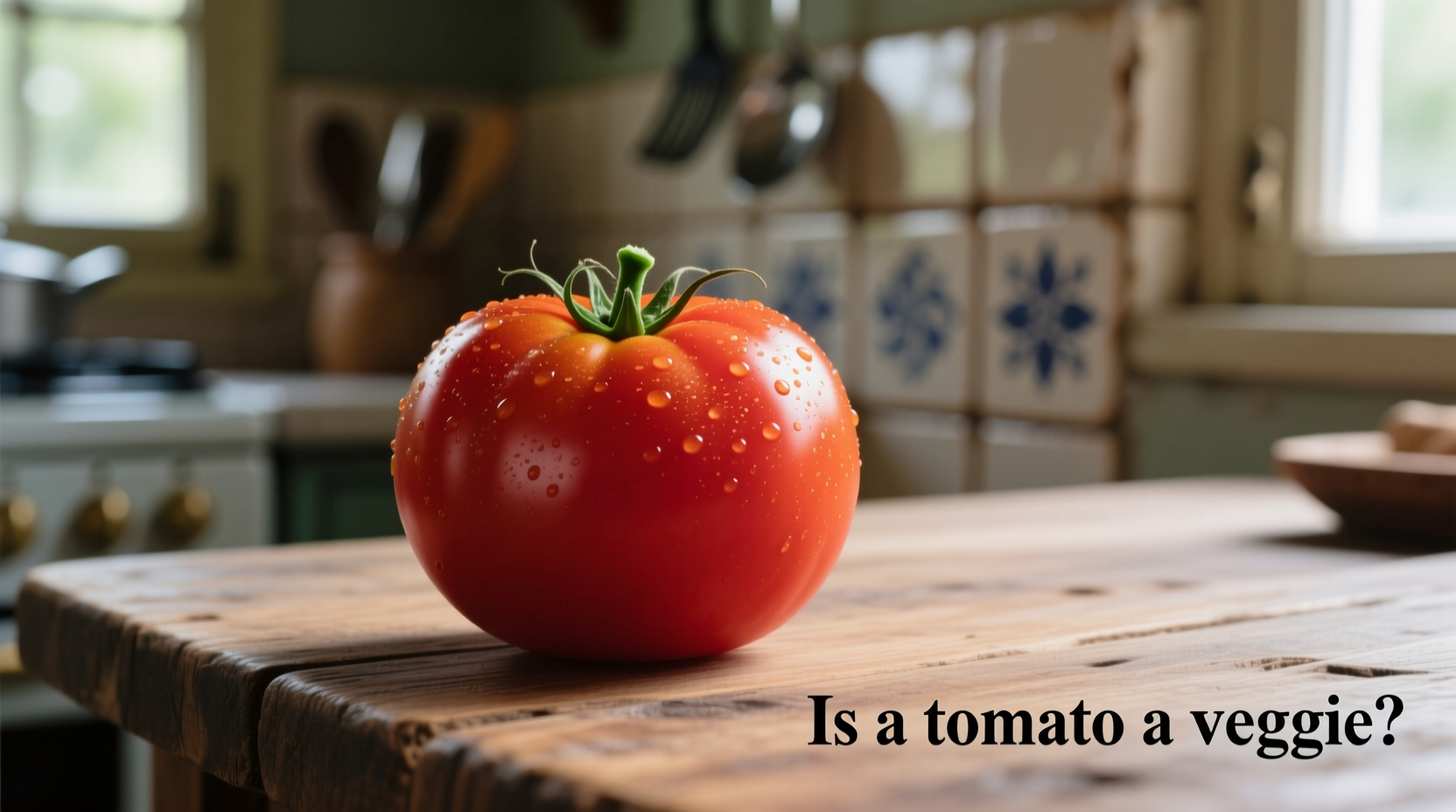Yes, tomatoes are botanically classified as fruits but legally and culinarily treated as vegetables. This dual classification explains why tomatoes appear in salads rather than desserts despite their scientific categorization.
Ever wondered why your salad includes tomatoes while your fruit bowl doesn't? You're not alone. The question is tomato a veggie has sparked debates among botanists, chefs, and even Supreme Court justices for over a century. Understanding this classification confusion provides valuable insight into how science, law, and culinary tradition intersect in our everyday food choices.
The Botanical Reality: Tomatoes Are Fruits
From a strict botanical perspective, tomatoes qualify as fruits. They develop from the ovary of a flowering plant and contain seeds - meeting the scientific definition of a fruit. Specifically, tomatoes are classified as berries, a subgroup of fruits, belonging to the nightshade family (Solanaceae) alongside peppers and eggplants.
| Classification Type | Tomato Status | Key Characteristics |
|---|---|---|
| Botanical | Fruit (berry) | Develops from flower ovary, contains seeds |
| Culinary | Vegetable | Savory flavor profile, used in main dishes |
| Legal (US) | Vegetable | Based on 1893 Supreme Court ruling |
The Legal Turning Point: Nix v. Hedden (1893)
The confusion reached its peak in 1893 when the US Supreme Court settled the matter in Nix v. Hedden. Importers argued tomatoes should be classified as fruits to avoid higher vegetable tariffs. The Court unanimously ruled tomatoes should be considered vegetables based on how they're commonly used in cooking, stating:
"Botanically speaking, tomatoes are the fruit of a vine, just as are cucumbers, squashes, beans, and peas. But in the common language of the people...all these are vegetables, which are grown in kitchen gardens, and which, whether eaten cooked or raw, are, like potatoes, carrots, parsnips, turnips, beets, cauliflower, cabbage, celery, and lettuce, usually served at dinner in, with, or after the soup, fish, or meats which constitute the principal part of the repast, and not, like fruits, generally as dessert."
Why the Classification Matters in Practice
Understanding whether tomato is a vegetable or fruit affects more than just trivia nights. This distinction influences:
- Culinary applications: Chefs treat tomatoes as vegetables due to their savory flavor profile and low sugar content compared to dessert fruits
- Nutritional guidelines: The USDA counts tomatoes in the vegetable group for dietary recommendations
- Gardening practices: Tomato plants require different care than typical fruit trees or berry bushes
- Food labeling regulations: Legal classifications determine how products can be marketed
Tomato Classification Timeline
The journey of tomato classification reveals how cultural context shapes our understanding of food:
- 1500s: Spanish explorers bring tomatoes from the Americas to Europe, initially grown as ornamental plants
- 1753: Carl Linnaeus classifies tomato as Solanum lycopersicum, establishing its botanical fruit status
- 1820s: Robert Gibbon Johnson publicly eats tomatoes in Salem, New Jersey, helping overcome fears about their toxicity
- 1883: US tariff law imposes duties on imported vegetables but not fruits
- 1893: US Supreme Court rules tomatoes are vegetables for tariff purposes in Nix v. Hedden
- 1987: Arkansas designates the South Arkansas Vine Ripe Pink Tomato as the official state vegetable
- 2001: The European Union legally classifies tomatoes as vegetables for agricultural purposes
When Classification Actually Matters
For most home cooks, is tomato a veggie doesn't affect daily cooking. However, the distinction becomes crucial in specific contexts:
- Commercial food production: Legal classifications affect labeling requirements and import tariffs
- Nutrition science: Researchers studying lycopene content treat tomatoes differently than sweet fruits
- Gardening zones: Tomato cultivation follows vegetable gardening practices rather than fruit orchard methods
- Culinary competitions: Some cooking contests have separate categories for fruit and vegetable dishes
According to the USDA FoodData Central, tomatoes contain just 2.6 grams of sugar per 100 grams, compared to 10+ grams in most fruits classified for dessert use. This nutritional profile explains why chefs consistently treat tomatoes as vegetables despite their botanical classification.

Common Misconceptions Clarified
Several myths persist about tomato classification:
- Myth: The Supreme Court ruling changed the botanical classification
Fact: The ruling only affected legal and tariff classification, not scientific understanding - Myth: All "vegetable" tomatoes are red
Fact: Tomatoes come in yellow, orange, green, purple, and even black varieties, all botanically fruits - Myth: If it's a fruit, it must be sweet
Fact: Many botanical fruits (like cucumbers and avocados) have low sugar content and savory applications
Practical Takeaways for Home Cooks
Whether you're is tomato a vegetable or fruit wondering while gardening or cooking, here's what actually matters:
- Treat tomatoes as vegetables in meal planning due to their savory flavor profile
- Store tomatoes at room temperature away from direct sunlight (unlike most fruits)
- Pair tomatoes with other vegetables in dishes rather than sweet fruits
- Understand that the classification doesn't affect nutritional value or cooking properties
The next time someone asks is tomato a veggie, you can confidently explain that while science says fruit, practical usage makes it a vegetable - and that both perspectives have validity depending on context. This understanding helps bridge the gap between scientific accuracy and culinary tradition.











 浙公网安备
33010002000092号
浙公网安备
33010002000092号 浙B2-20120091-4
浙B2-20120091-4